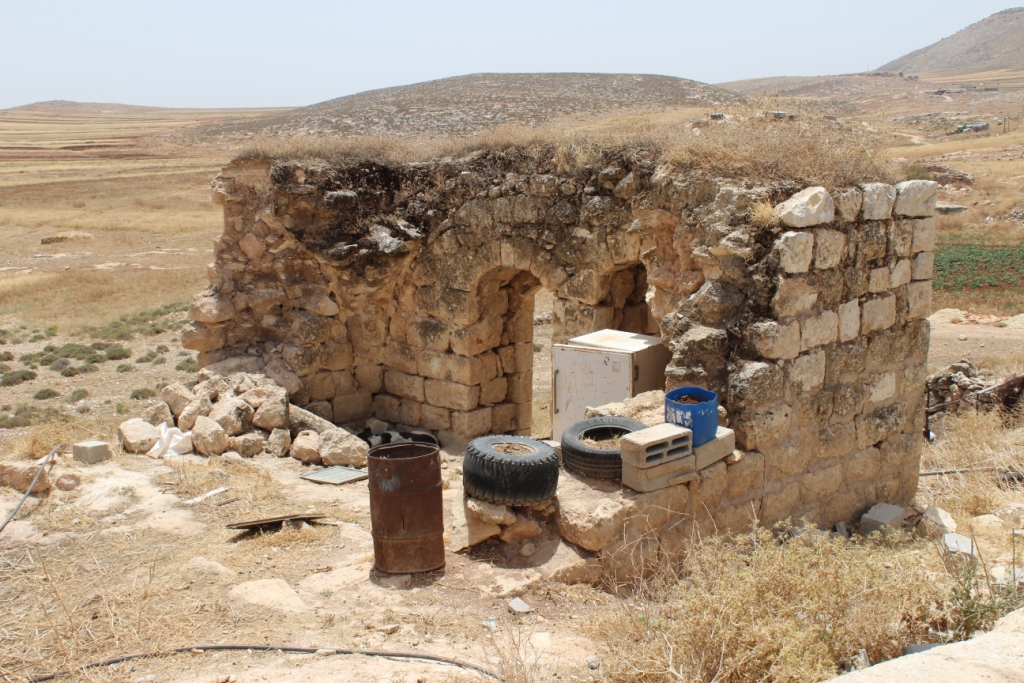Burried in Life

To understand the extent of the trauma caused by house demolitions, you should start by acknowledging the love and connection of the people for their land and home, for the hills and valleys where they grew up, for the land they identified with roots of their families and culture, the history of their parents and grandparents…
Abu Samed was born in the village of Al Twayyel, in the east of Aqraba, in Nablus governorate. It is where he sees his future, and where he wants to spend his life. This is why he built a house for his family in which they lived for seven years. Unfortunately, the land where he built his house was located in Area C[1], so Abu Samed could not get a construction permit. The Israeli authorities declared the land a closed military area and started to send demolition orders.
On the 29th of April 2014, in the early morning, Abu Samed’s family (2 wives and 8 children) were awaken by the arrival of the Israeli Security Forces (ISF) that came to destroy their home. At dawn it was reduced to rubble, as if it had never existed. Three other houses and a mosque were demolished that same day in the village. Several humanitarian organizations, including the International Red Cross, provided support to the families, including tents as emergency shelters. But on the 12th of May, the army came back to destroy more houses and seized the tents.
Médecins du Monde France (MdM) started to provide psychosocial support at that point, to help the children to overcome the trauma. Following ISF interventions and the destruction of their home and shelter, they suffered from nightmares, enuresis, and flashbacks from the attacks, fear and stress and had to join a support group to handle the trauma.
Abu Samed had to find an alternative shelter, for the family and the only option he found was to restore one of the old houses to make it livable, challenging the occupation that prevent any kind of restoration for such houses.
In December 2014, the ISF came again, and, again, destroyed the family’s shelter. The repetition of the attacks, the uncertainties over the family’s future is a source of stress for all of them. This last trauma was a very difficult time for Abu Samed. Determined not to leave his village, he took the decision to live in a cave, one that was used in the past as a tomb. In this situation, he told us “they buried us while we’re alive”
- [1] The Oslo Accords and the Interim Agreement signed between Israel and the Palestine Liberation Organization (PLO) divide the West Bank in 3 areas: A, B and C. Area C represents around 62% of the West Bank and is under an almost complete control of Israel, including for security and all land-related civil matters – notably building permits. Each year hundreds of Palestinian homes and other structures are demolished due to the lack of Israeli-issued building permits. Israel prohibit construction through a combination of legal, military and administrative means and citing various rationales (declaration of land as a “military land” or an “abandoned property”, expropriation for “public needs”…). More than 94 per cent of all Palestinian permit applications have been rejected in recent years. According to the UN agency OCHA, “the restrictive planning system makes it almost impossible for Palestinians to obtain permits, while providing preferential treatment for Israeli settlements”. According to UNRWA “Many of the people affected already live in poverty, and demolitions are a leading cause of their ongoing displacement and dispossession in the West Bank. Demolitions also lead to a significant deterioration in living conditions. Families and communities face increased poverty and long-term instability, as well as limited access to basic services, such as education, health care, water and sanitation.”